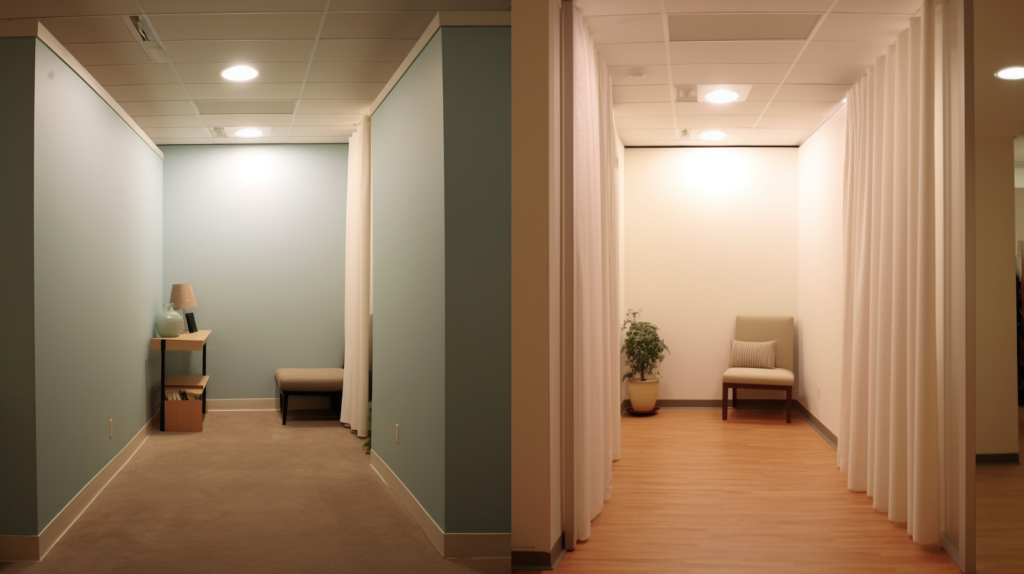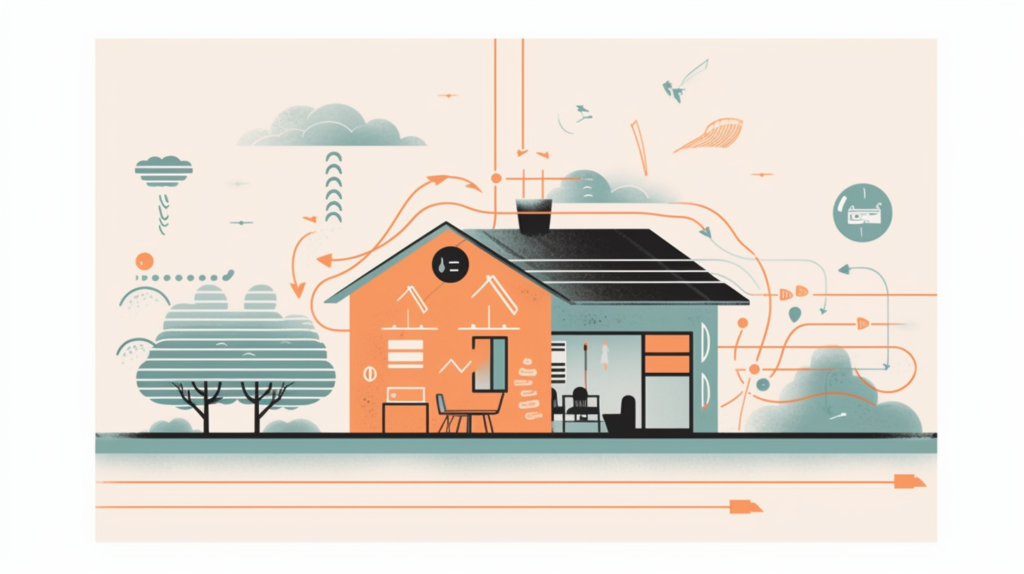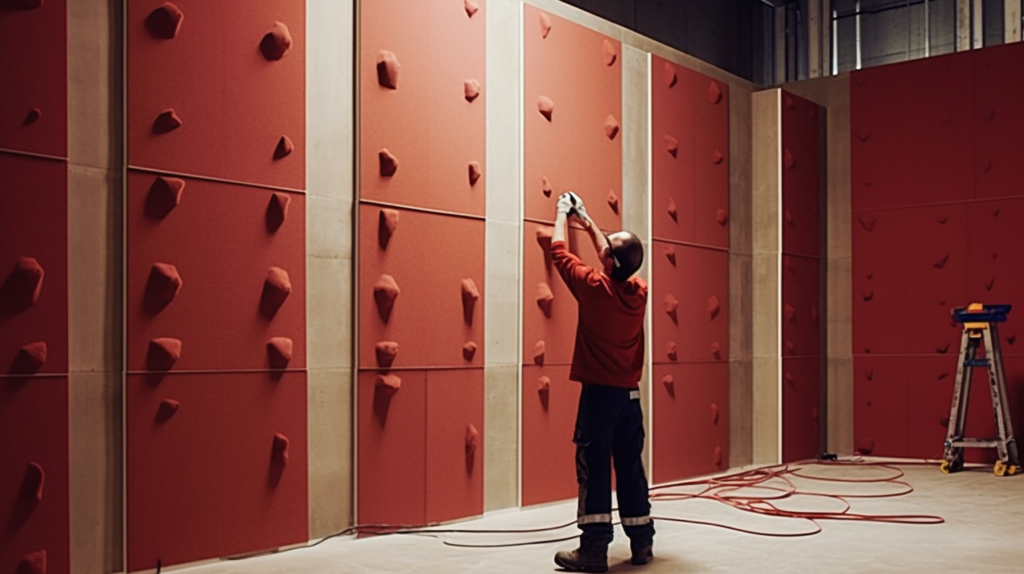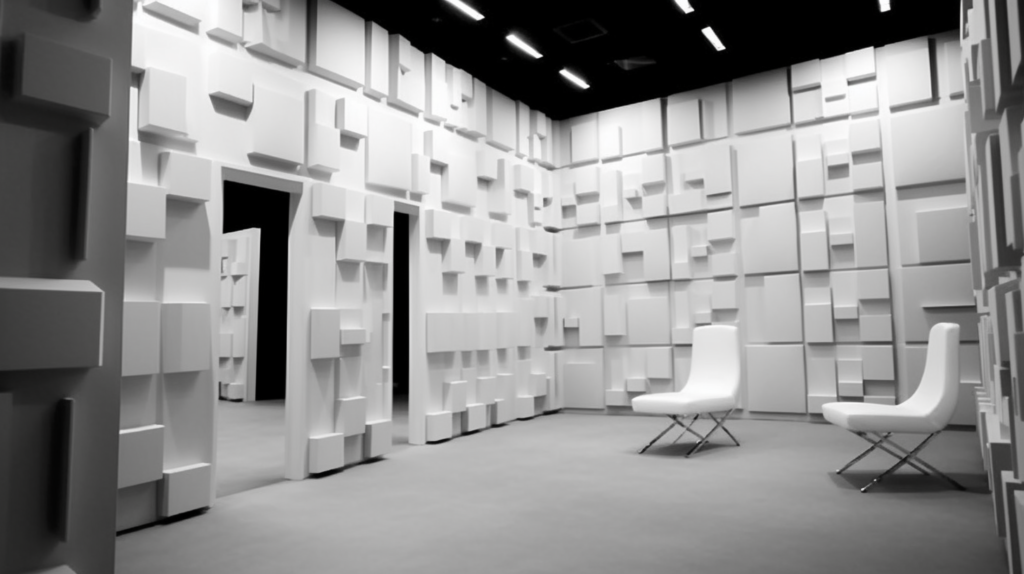Imagine being able to enjoy a movie or a peaceful night’s sleep without the nuisance of street noise or loud neighbors. The key to this tranquility often lies in the walls that surround you.
This guide will delve into the intricacies of soundproofing walls specifically, taking you through the types of noise you might encounter and the best techniques to combat them.
We’ll explore traditional methods like insulating wall studs and also discuss modern solutions like Burton Acoustix Panels made from high-quality NBR and polyester.
Soundproofing walls is about more than just blocking out noise; it’s about creating a space where comfort and function harmonize. Ready to transform your walls into barriers of serenity? Let’s dive in.
What Is Soundproofing and Why Is It Important?

It’s an essential aspect of creating a comfortable and quiet environment. Whether you’re trying to keep the noise out or keep it in, soundproofing can make your space more pleasant and functional.
Understanding the importance of soundproofing goes beyond personal comfort. In professional settings like recording studios, effective soundproofing is crucial for optimal performance.
In residential areas, soundproofing can improve quality of life by creating a peaceful environment, free from the intrusion of external noises.
What Types of Noises Can Be Soundproofed?

There are two types of noises. One is easier to deal with and the other one is hard to deal with. Knowing which you experience is crucial to your soundproofing efforts. Let’s find out.
Airborne Noise
Airborne noise refers to sounds that travel through the air. Examples include conversations, music, and television audio.
These types of noises are usually easier to isolate compared to structure-borne noises.
However, dealing with airborne noise often requires a multi-faceted approach that involves barriers, dampening materials, and sometimes even white noise machines.
Structure-Borne Noise
Structure-borne noise, on the other hand, is sound that travels through the materials of the building itself. Footsteps on a hardwood floor or the sound of a washing machine are examples.
These types of sounds are more challenging to isolate and often require structural modifications for effective soundproofing.
Structure-borne noise often needs more intensive solutions like decoupling or damping to effectively manage.
How To Soundproof Walls by Exposing Wall Studs And Adding Soundproofing Foam

1. Expose Wall Studs
Before you begin the process of exposing wall studs for soundproofing, safety should be your first concern.
Make sure to turn off any electrical circuits that run through the wall you’ll be working on. Confirm there are no plumbing lines or other utilities that could be damaged during the process.
To expose the wall studs, you’ll need to remove the existing wall surface, be it drywall, plaster, or another material.
Wear appropriate safety gear, including gloves and eye protection, and use the right tools for the job, such as a pry bar or hammer, to carefully remove the wall surface without damaging the studs underneath.
2. Install Mineral Wool or Fiberglass Wool Into Wall Studs
After exposing the wall studs, the next step is installing your chosen insulating material—either mineral wool or fiberglass wool.
Measure the space between the studs to determine the size of the insulation pieces you’ll need. Cut the insulation to size using a utility knife or specialized insulation cutter.
Place the cut pieces of insulation between the wall studs. Make sure the fit is snug to maximize the material’s soundproofing capabilities.
If the insulation is too loose, it won’t be as effective in blocking sound. Once all the insulation is in place, you can proceed to the next step in your soundproofing project.
3. Install Resilient Channels Across Wall Studs
Adding resilient channels is the next step in your soundproofing journey. These metal strips should be attached perpendicular to the wall studs.
Use screws to secure the resilient channels in place, ensuring they are evenly spaced along the length of the wall.
The channels act as a separation between the drywall and the wall studs, breaking the path that allows sound to travel through the wall.
The correct installation of resilient channels can significantly reduce the amount of structure-borne noise that penetrates the wall, making your soundproofing much more effective.
4. Seal Walls with Drywall and Soundproofing Glue
The final step in soundproofing your walls is to seal them with drywall. When sealing up gaps, use soundproofing type of adhesive like your Green Glue to ensure there would not be any leaks of sound in or out of your room.
How Can You Soundproof Walls Without Exposing The Walls

Soundproofing concrete walls presents a unique set of challenges. Unlike wooden walls with studs, concrete walls are a solid mass that can transmit a lot of sound.
However, this also means that concrete walls benefit greatly from the addition of specialized soundproofing materials like Burton Acoustix Panels.
Use Burton Acoustix Soundproofing Panels
Burton Acoustix Panels are specifically designed to tackle the challenges of soundproofing walls that cannot be exposed – like Concrete walls.
These panels are made from high-quality materials, including NBR and polyester, that are effective in reducing both airborne and structure-borne noises.
These panels work by adding mass and separation to your existing wall, thereby reducing the amount of sound that can penetrate through.
They are a convenient and effective solution for those who are unable to make structural changes to their walls but still require a high level of soundproofing.
1. Prepare the Wall Surface for Installation
The first step in installing Burton Acoustix Panels is to prepare the wall surface. This involves cleaning the wall to remove any dust, dirt, or grease that could interfere with the adhesive.
Use a damp cloth or sponge to wipe down the wall, and allow it to dry completely before proceeding.
A clean surface is essential for the adhesive to bond effectively with the wall. This ensures that the panels will remain securely in place, providing reliable soundproofing for an extended period.
2. Plan the Layout of Soundproofing Panels
Planning the layout is a crucial step in the installation process. Use a level to draw straight lines on the wall to guide the placement of the panels.
This helps in achieving a uniform and aesthetically pleasing result.
The layout should also take into account the location of any electrical outlets, switches, or other fixtures on the wall. Make sure to leave enough space around these elements to allow for easy access.
3. Tear Off Kraft Paper From Burton Acoustix Soundproofing Panels To Expose Adhesive Side
Tear off kraft paper from each soundproofing panels to expose the adhesive side of soundproofing panels.
4. Install Burton Acoustix Soundproofing Panels
Once the adhesive is applied, you can proceed to attach the panels to the wall. Press each panel firmly against the wall, following the lines you marked during the planning stage.
Use a clean cloth or your hand to apply even pressure across the surface of the panel.
Make sure each panel aligns properly with its neighbors to avoid any gaps or overlaps. These could compromise the effectiveness of your soundproofing.
5. Ensure proper Adhesion
After all the panels are in place, it’s essential to ensure they adhere properly to the wall. Some installers recommend using a roller to apply even pressure across the surface of each panel.
This ensures a strong bond and helps the adhesive to spread evenly.
Allow the adhesive to cure for the time recommended by the manufacturer. This will vary depending on the type of adhesive used but is crucial for ensuring the longevity and effectiveness of your soundproofing.
Adding Acoustic Panels After Soundproofing

Once you’ve completed the soundproofing of your walls, the next logical step is to consider acoustic treatments.
While soundproofing aims to block or reduce sound, acoustic treatments enhance the quality of the sound within a space.
They control echoes, improve speech clarity, and generally make a room sound better.
Acoustic treatments are particularly important in spaces where sound quality is crucial. This includes home theaters, recording studios, and even office conference rooms.
These treatments complement your soundproofing efforts, resulting in a space that’s not only quiet but also acoustically pleasing.
A rule of thumb is to cover at least 30% of the walls with acoustic panels and even more if you are using the space for either home theater or home studio.
Choosing the right location for your polyester acoustic panels is crucial for maximizing their effectiveness.
The first reflection points on your walls are usually the best locations. These are the spots where sound waves first make contact after being emitted from a sound source, like a speaker.
Use a mirror or a laser pointer to identify these first reflection points. Place the panels at these locations to absorb the sound waves as they bounce off the walls.
This will help in reducing echoes and improving the overall sound quality in the room.
1. Prepare the Surface for Acoustic Panels
Before installing the panels, make sure the wall surface is clean and free from dust or grease.
Just like with soundproofing panels, a clean surface ensures better adhesion, whether you’re using adhesive strips, mounting brackets, or another method to secure the panels.
Wipe down the wall with a damp cloth and allow it to dry completely. This ensures that whatever mounting method you use will be as effective as possible, securing the panels tightly to the wall.
2. Install Polyester Acoustic Panels
Add adhesive strips onto Polyester acoustic panels and prepare acoustic panels for adhesion.
Place the panel on the wall, aligning it with the marks you made for the first reflection points. Use the recommended mounting method to secure the panel to the wall.
Make sure it is level and aligned properly with any other panels you may be installing.
Repeat this process for each panel, ensuring they are evenly spaced and aligned. Once all panels are securely in place, you can enjoy improved acoustics along with your soundproofed walls.
Conclusion
Understanding the types of noise you face is crucial for effective soundproofing.
From exposing wall studs to using Burton Acoustix Panels, various methods can block out unwanted noise.
But true acoustic comfort involves not just soundproofing but also enhancing sound quality with treatments like polyester acoustic panels.
Whether it’s a DIY project or a professional endeavor, soundproofing is an investment in comfort and quality of life.
